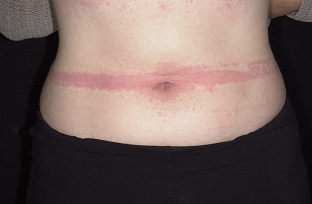Symptoms of mastocytosis or, as it is often called, urticaria pigmentosa, can be disguised as nevi, impetigo and even drug toxicoderma, but at the same time they often cause systemic lesions, are dangerous for the development of severe hypotension and shock. Therefore, the problem of mastocytosis is very relevant and requires a multidisciplinary approach, while timely high-quality diagnostics is important. Mastocytoses form a heterogeneous group of diseases with a characteristic proliferation of mast cells in the skin, and in some forms also in the bone marrow, lymphatic organs, and other body systems. What are the symptoms of mastocytosis, find out at estet-portal.com.
What are the manifestations of mastocytosis?
For the first time, the skin form of the disease was described in 1869 by E. Nettleship under the name "chronic urticaria, leaving behind brown spots". Subsequently, various researchers proposed terms that were not widely used in practice. The term “urticaria pigmentosa”, introduced in 1878 by A. Songster, has become firmly established in medical terminology.
In 1887, P. Unna discovered the infiltration of skin rashes with mast cells. Based on the predominance of mastocytes in the infiltrate in urticaria pigmentosa, A. Sezary (1936), and then R. Degos (1951) proposed the term “mastocytosis” generalizing for all clinical varieties of the disease. Symptoms of mastocytosis can manifest in two forms - cutaneous and extracutaneous.
What are the symptoms of mastocytosis in the cutaneous form?
Solitary mastocytomas are sometimes present at birth, sometimes formed during the first two years of life. This is the second most common form of manifestation of mastocytosis in childhood after urticaria pigmentosa.
Solitary mastocytomas are pink or brownish-orange papules or nodules ranging in diameter from a few millimeters to 2 cm. The surface of the lesions is smooth, sometimes resembling an orange peel.
Internal organs are very rarely affected. Urticaria pigmentosa (maculopapular mastocytosis) is the most common manifestation of mastocytosis, especially in childhood. During the first year of life, in rare cases later (for example, after infections), multiple spots, papules or plaques of a reddish-brown color appear all over the skin, more pronounced on the trunk. When rubbing, especially in young children, bullous reactions occur as symptoms of mastocytosis.
The most common accompanying symptom of mastocytosis is itching. Systemic damage occurs in about 10% of patients, according to estet-portal.com. First of all, this happens with a later manifestation of the disease (after 5 years). It presents with diarrhea, stunted growth, flushing episodes, headaches, and bone pain.

Telangiectasia maculata eruptive persistent - develops mainly in adolescents of the older age group or in adults. Merging, reddish, telangiectatic spots are typical, predominantly on the trunk.
Rare diffuse cutaneous mastocytosis presents with symptoms of mastocytosis usually at birth or in the first three months of life.
Symptoms of mastocytosis in diffuse cutaneous form:
- not so much isolated mastocytomas as diffuse infiltration;
- rough thickening of the skin (pachydermia), which often develops on the flexion surfaces of the skin.
- typically sudden eruption of blisters with serous-hemorrhagic contents;
- diffuse itching and general symptoms (flushing, diarrhea, dyspnea, hypotension) are often observed in this form.
Symptoms of mastocytosis with extracutaneous manifestations of mastocytosis
Mast cell infiltration of parenchymal organs is more often observed in mastocytosis in adulthood, but in some cases it can develop with “skin” forms of childhood mastocytosis. Mast cell infiltration most commonly occurs in the gastrointestinal tract and skeletal system, but may also affect the lungs, kidneys, myocardium, pericardium, genitourinary tract, and omentum.
Syncope, severe hypotension or shock, tachycardia, bronchospasm, generalized flushing, rhinorrhea, pruritus, and headache (“mastocytosis syndrome”) may develop due to massive release of vasoactive mast cell products.
Thus, manifestations of mastocytosis can be both local and systemic, which greatly complicates the diagnosis of mastocytosis. Identifying the symptoms of mastocytosis requires specific treatment for mastocytosis, which you can read more about in our next article.








Add a comment